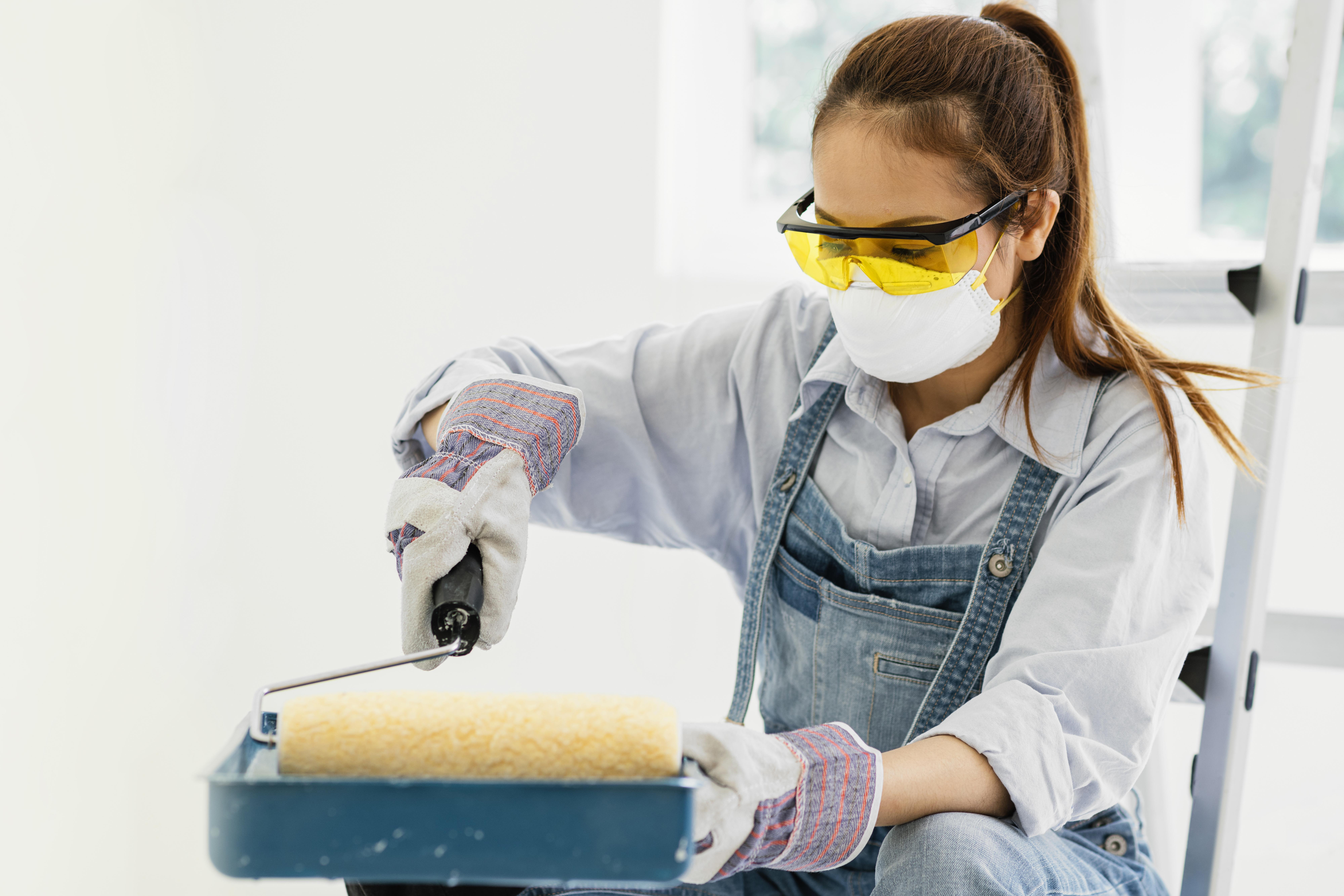Whether you’re a DIY enthusiast giving your living room a makeover or a professional getting ready to start a new project, it’s crucial to know the health hazards involved in painting.
It may appear to be a relatively risk-free activity, but serious bodily harm can occur if the proper precautions are not performed during a paint project. The paint contains toxic compounds that can cause serious irritation upon contact with the eyes or skin and paint fumes can induce headaches and respiratory difficulties.
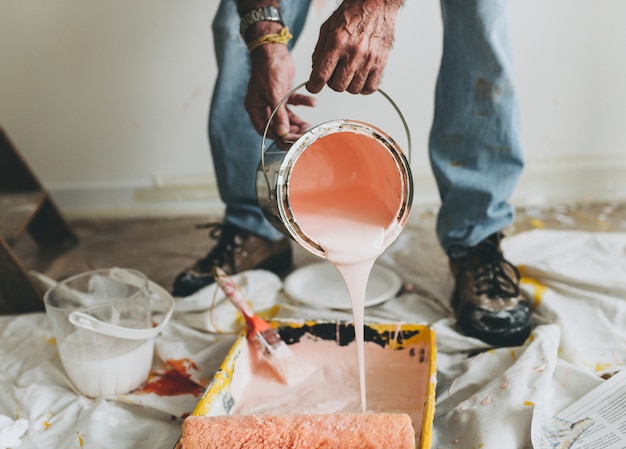
Another reason is that painting supplies, such as oil primer and paint thinner, are extremely flammable. Painters are at risk of getting burned if they don’t handle their materials carefully. Finally, working on the exterior often necessitates working at a height, putting painters at risk of falling and harming themselves.
Just like other DIY projects, painting safety is something you should think about: consider all of the tools required, whether the room to be painted has enough ventilation, and the proper cleanup and disposal of the materials once the project is over.
Follow these safety guidelines for a safe painting project:
Make sure you have enough ventilation.
Proper ventilation is the most critical factor to consider in using solvent-based paint. Vapors from solvent paints can cause dizziness, headaches, and nausea. These issues are more likely to arise when painting an area with insufficient ventilation.
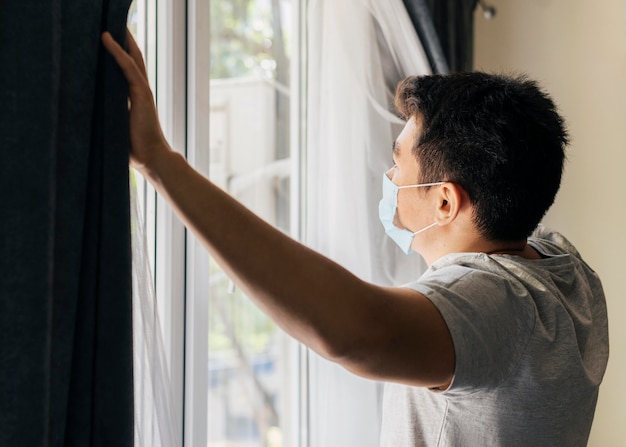
Keep the project room’s doors and windows open; this will create a cross breeze to help circulate air and preventing inhalation of paint fumes. Make sure the fan is turned on if the room has one. Finally, think about using a respirator. You won’t need a costly oxygen machine; instead, a simple painter’s mask from your local building supply or hardware store will suffice.
Invest in personal safety equipment (PPE).
Solvent paints, cleansers, and strippers, in addition to the fumes, can irritate your skin and eyes if they are subjected to the chemicals directly. Pick up at least a couple of pieces of personal protective equipment. Some of these things are:
During sanding and scraping, wear cloth or leather gloves to protect your skin.
To protect your face from chemicals, wear eye goggles, glasses, or masks.
Anti-dust masks are recommended to keep your lungs free from irritation. If your painting equipment is noisy, wear ear protection. Wearing a long-sleeved shirt helps protect your arms from splashes.
Check your ladder for possible damage.
Surprisingly, the safety of ladders is often disregarded. Every piece of equipment will eventually become old and worn out, so check to see whether your beloved ladder is now wobbling to avoid potential falls, injuries, and to prevent paint canisters from tipping over while working.
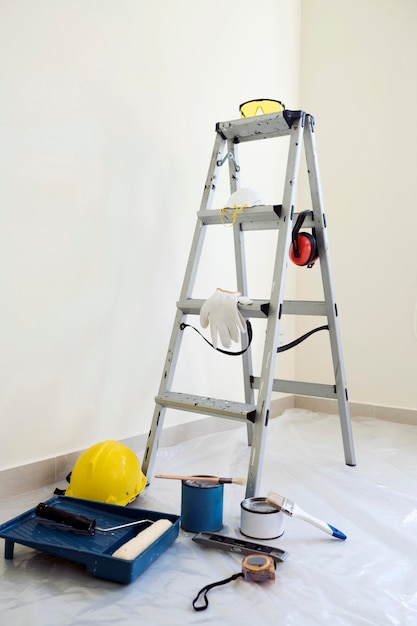
When using a safe ladder, be careful not to lean too much on it to reach specific areas. It’s best to simply descend, move the ladder, and then return to the top to paint.
Clean up thoroughly.
Clear out your desk, whether you’re finished or just taking a break for the day. Because some paints are flammable, we recommend keeping them in a cool, dry place away from direct sunlight. Make sure your storage location isn’t near a heat source or an open flame, as paint fumes combined with heat can spark a fire.
Discard rags that have been exposed to paint thinner and keep things outside until you can dispose of them appropriately. Use new rags instead if you’re going to use more paint thinner.
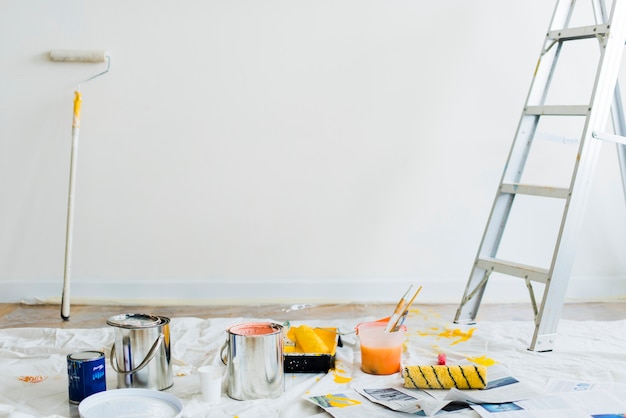
Allow enough time for the rooms to dry.
Allow enough time for the room to dry after you’ve finished. People may believe that a few hours will suffice, however, paint requires many days to cure properly. Allow painted areas to dry for at least 24 hours and up to three days.
Small children and animals should be kept out of the room during this period. Consider installing a child-proof gate in the doorway if you can’t close it. While the room dries entirely, this should act as a proper deterrent. Also, keep the room well ventilated so that the odors can dissipate adequately. Keep your fan on and, if the weather permits, open your windows.
Take your time to prepare
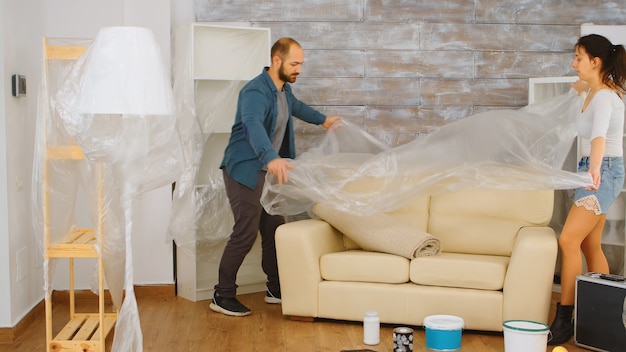
Prepare a safety checklist if you are about to begin a painting project. Protective glasses and gloves should be worn. To avoid spills getting out of hand and triggering a slip and fall catastrophe, make sure to carry cleaning supplies. It’s critical to discover as many potential hazards as possible before taking the appropriate actions to limit your risks and avoid injury. The best approach to ensure that your painting project is a success is to plan ahead of time and ensure that you have everything you need before you begin.
All photos are from Freepik
RELATED ARTICLES:
6 Questions to Ask Yourself Before Repainting Your House Exterior
Painting Plywood: A Step-by-Step Guide
Types of House Painting Tools
CITATIONS:
- DeRousse, C. (2018, February 21). 5 Safety Tips for Indoor Painting. Major Painting. Retrieved October 8, 2021, from https://www.majorpaintingco.com/projects-and-tips/5-safety-tips-for-indoor-painting.
- Parker, L. (2019, October 22). Painting Hazards and Precautions. Performance Painting. Retrieved October 8, 2021, from https://www.performance-painting.com/blog/painting-hazards-and-precautions.
- Precautions and Necessary Measures to Take When Painting a House. Magic Bristles. (2016, August 15). Retrieved October 8, 2021, from https://paintersandrefinishers.com/precautions-and-necessary-measures-to-take-when-painting-a-house/.
- Using the Right PPE for Painting Jobs. Construction Fastener and Tools. (2018, January 15). Retrieved October 8, 2021, from https://cf-t.com/blog/proper-ppe-painting-jobs.
![]()


